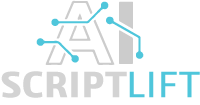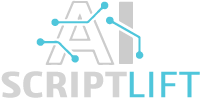
How to Use AI for Competitive Content Analysis
**How to Use AI for Competitive Content Analysis** is a pressing question for businesses eager to stay ahead in today’s digital landscape. With the rapid evolution of technology, leveraging artificial intelligence can provide a significant edge in understanding competitors’ content strategies. Are you ready to discover how AI can transform your approach to content analysis and boost your online presence?
AI tools can analyze vast amounts of data, revealing insights into competitors’ content performance, audience engagement, and trending topics. By utilizing platforms like JAXI.AI, businesses can streamline their content creation process, optimize SEO strategies, and tailor their messaging to resonate with target audiences. This article will delve into practical steps for implementing AI in your competitive content analysis, ensuring you harness the full potential of these innovative technologies.
But that’s just the beginning! As we explore the transformative power of AI in content analysis, you’ll uncover actionable strategies that can elevate your digital marketing efforts. Join us as we navigate the exciting realm of AI-driven insights, guided by industry experts who have successfully integrated these tools into their content strategies. Let’s dive in!
Understanding Competitive Content Analysis
Competitive content analysis involves examining the content strategies of competitors to identify strengths and weaknesses. This process is crucial in digital marketing, as it helps businesses understand market trends and audience preferences. By analyzing competitors, companies can refine their own content strategies, ensuring they remain relevant and engaging.
AI significantly enhances traditional content analysis methods. It processes vast amounts of data quickly, uncovering insights that would take humans much longer to identify. For instance, AI tools can analyze keyword usage, content structure, and audience engagement metrics in real-time. This allows marketers to adapt their strategies swiftly, staying ahead of the competition.
Industries such as e-commerce, technology, and healthcare greatly benefit from competitive content analysis. In e-commerce, understanding competitor product descriptions can lead to improved sales copy. Similarly, technology firms can analyze competitor blogs to identify trending topics and gaps in content. Healthcare organizations can assess patient engagement strategies, ensuring they provide valuable information to their audience. For more insights on leveraging AI in your strategy, check out the benefits of AI and the power of AI.
Identifying Your Competitors
To effectively identify your competitors, start by distinguishing between direct and indirect rivals. Direct competitors offer similar products or services, while indirect competitors fulfill the same customer needs in different ways. Begin your search with a simple Google query using relevant keywords. This method reveals businesses that rank alongside you in search results.
Next, leverage social media platforms to analyze brands that engage your target audience. Look for companies with similar follower demographics and content strategies. Tools like SEMrush or Ahrefs can also provide insights into competitors’ online presence and keyword strategies.
Once you gather this information, create a comprehensive competitor list. Include their website URLs, social media profiles, and key offerings. Regularly update this list to reflect any changes in the market landscape. Additionally, consider categorizing competitors based on their strengths and weaknesses. This structured approach will enhance your analysis and help you identify opportunities for differentiation. By understanding your competitive landscape, you can refine your strategy and improve your market positioning.
Gathering Content Data
To effectively gather content data, focus on various types of content such as blogs, videos, and social media posts. Each format offers unique insights into audience engagement and trends. For instance, blogs provide in-depth information, while videos capture visual interest. Social media posts reveal real-time reactions and preferences.
Utilizing AI tools can streamline the data collection process. These tools can scrape vast amounts of content quickly and efficiently. By automating data gathering, you save time and enhance accuracy. For example, tools like BuzzSumo allow you to analyze popular content across different platforms. Similarly, SEMrush offers comprehensive insights into keyword performance and competitor strategies.
Consider integrating these AI tools into your workflow. They not only simplify data collection but also provide valuable analytics. By leveraging these resources, you can stay ahead in your content strategy. Explore more about the benefits of AI in content analysis. Additionally, learn how businesses can leverage AI for SEO advantages.
Analyzing Content Performance
To effectively gauge content performance, focus on key performance indicators (KPIs) such as engagement, shares, and backlinks. Engagement metrics reveal how well your audience interacts with your content. High shares indicate that your content resonates with readers, while backlinks demonstrate its authority and relevance.
AI can significantly streamline the analysis of these KPIs. By automating data collection and analysis, AI tools provide real-time insights into content performance. For instance, platforms like Google Analytics can be enhanced with AI algorithms to predict trends and identify high-performing content. This allows marketers to adjust strategies promptly.
Consider the case of a digital marketing agency that utilized AI to analyze their blog posts. They discovered that articles with infographics received 50% more shares than text-only posts. Consequently, they shifted their content strategy to include more visual elements. Another example involves a tech company that used AI to track backlinks. They identified key influencers linking to their content, which led to successful outreach campaigns. By leveraging AI, businesses can enhance their content strategies and achieve remarkable results. For more insights, check out this article on the benefits of AI in digital content strategy.
Content Gap Analysis
Content gap analysis plays a crucial role in competitive analysis. It helps identify areas where your competitors excel, allowing you to refine your own content strategy. By pinpointing these gaps, you can create targeted content that meets audience needs more effectively.
To leverage AI for identifying content gaps, start by gathering data on your competitors’ content. Use AI tools to analyze their articles, blogs, and social media posts. These tools can highlight topics they cover extensively and areas they overlook. Next, compare this data with your own content. Look for subjects that resonate with your audience but remain unaddressed by your competitors.
Here’s a step-by-step guide to conducting a content gap analysis:
- Identify Competitors: List your main competitors in the industry.
- Collect Data: Use AI tools to gather their content metrics.
- Analyze Topics: Identify popular topics and themes they cover.
- Spot Gaps: Look for missing topics that your audience seeks.
- Create Content: Develop content that fills these gaps.
For more insights on enhancing your strategy, check out this resource or explore the benefits of AI in your content approach.
Content Strategy Development
Leveraging insights from competitive content analysis can significantly enhance your content strategy. By examining what competitors produce, you can identify gaps in your own content. This approach allows you to create more relevant and engaging material. AI plays a crucial role in this process. It aids in topic generation by analyzing trending subjects and audience interests. Additionally, AI tools can refine audience targeting, ensuring your content reaches the right people.
For instance, a brand in the fitness industry analyzed competitors’ blog posts. They discovered a lack of content on mental health in fitness. By addressing this gap, they attracted a new audience segment. Similarly, a travel company utilized AI to assess competitors’ social media engagement. They found that posts featuring local experiences garnered more interaction. Consequently, they adjusted their strategy to highlight unique local adventures.
These examples illustrate how competitive analysis, powered by AI, can lead to successful content strategies. To explore more about the role of AI in digital content strategy, check out our insights. Additionally, learn how AI is transforming content creation for better results.
Monitoring Competitor Content
Ongoing monitoring of competitor content is crucial for staying ahead in today’s fast-paced digital landscape. By keeping an eye on what competitors produce, you can identify trends and gaps in your own strategy. This proactive approach allows you to adapt quickly and seize opportunities as they arise.
Utilizing advanced tools and AI solutions can enhance your content monitoring efforts. Platforms like BuzzSumo and SEMrush provide real-time insights into competitor performance. These tools help you track engagement metrics and content types that resonate with your target audience.
To adjust your strategy effectively, analyze the content that garners the most attention. Look for patterns in topics, formats, and publishing frequency. If a competitor excels with video content, consider incorporating similar elements into your strategy. Additionally, regularly review your findings to refine your approach. This iterative process ensures you remain competitive in your niche. For more insights on leveraging AI for your content strategy, check out our article on the benefits of AI and explore how AI is revolutionizing SEO.
Ethical Considerations in Content Analysis
When utilizing AI for content analysis, ethical considerations play a crucial role. First, ensure that your methods respect copyright laws and intellectual property rights. Avoid copying or closely imitating competitors’ content. Instead, focus on understanding their strategies and identifying gaps in the market. This approach fosters originality and innovation.
Moreover, transparency is vital. Clearly disclose the use of AI tools in your analysis. This builds trust with your audience and stakeholders. Additionally, prioritize data privacy. When analyzing competitor data, ensure that you do not infringe on personal or sensitive information.
To conduct competitive analysis responsibly, establish clear guidelines. Set boundaries on the types of data you collect and how you use it. Regularly review your practices to align with ethical standards. Remember, originality is key. Plagiarism not only damages your reputation but also undermines the value of your insights. For more on the importance of originality, check out this resource. By adhering to these principles, you can leverage AI effectively while maintaining ethical integrity in your content strategy. For further insights, explore the benefits of AI in your approach.
Future Trends in AI and Content Analysis
As AI technology evolves, several emerging trends will significantly influence content analysis. One notable trend is the integration of natural language processing (NLP) with machine learning algorithms. This combination enhances the ability to understand context and sentiment in content, allowing businesses to gain deeper insights into audience preferences. Furthermore, the rise of predictive analytics will enable companies to anticipate content performance, optimizing strategies before launching campaigns.
In the realm of competitive content analysis, future developments may include real-time data processing. This advancement will allow businesses to monitor competitors’ content strategies instantly. Consequently, organizations can adapt their approaches swiftly, maintaining a competitive edge. Additionally, AI-driven tools will likely become more user-friendly, empowering teams without extensive technical expertise to harness these insights effectively.
To prepare for these changes, businesses should invest in training their teams on AI tools and analytics. Embracing a culture of continuous learning will be crucial. Moreover, exploring resources like AI in digital content strategy can provide valuable insights. Staying informed about trends will ensure companies remain agile in a rapidly evolving landscape.
Frequently Asked Questions (FAQs)
Frequently Asked Questions (FAQs)
Competitive content analysis involves evaluating your competitors’ content strategies to identify strengths and weaknesses. By understanding what works for others, you can refine your approach. AI enhances this process by automating data collection and providing insights quickly. Tools like SEMrush and Ahrefs are excellent for conducting thorough analyses.
Conducting competitive content analysis regularly is crucial. Aim for at least quarterly reviews to stay updated on industry trends. However, be cautious when using AI; it can misinterpret data or overlook nuances. To maintain originality, always add your unique perspective and insights after analysis.
Focus on key metrics such as engagement rates, organic traffic, and conversion rates during your content performance analysis. Identifying content gaps is essential for staying competitive. Use AI tools to analyze keyword performance and audience interests effectively.
Moreover, AI can predict future content trends by analyzing historical data and current patterns. For best practices, monitor competitor content consistently. This will help you adapt your strategy and stay ahead. For more insights, check out our articles on AI in content strategy and digital content strategy.

